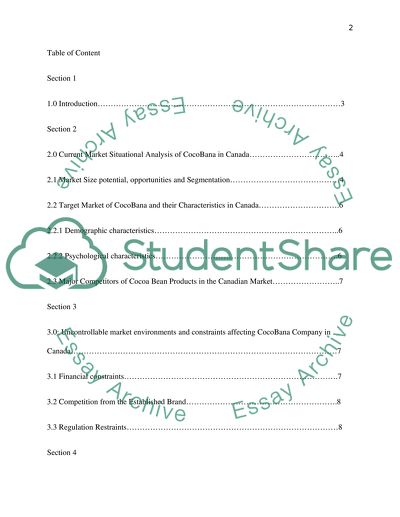Cite this document
(“CocoBanas cocoa beans Research Paper Example | Topics and Well Written Essays - 2000 words”, n.d.)
CocoBanas cocoa beans Research Paper Example | Topics and Well Written Essays - 2000 words. Retrieved from https://studentshare.org/marketing/1493896-the-analysis-study-of-introducing-cocobana-cocoa
CocoBanas cocoa beans Research Paper Example | Topics and Well Written Essays - 2000 words. Retrieved from https://studentshare.org/marketing/1493896-the-analysis-study-of-introducing-cocobana-cocoa
(CocoBanas Cocoa Beans Research Paper Example | Topics and Well Written Essays - 2000 Words)
CocoBanas Cocoa Beans Research Paper Example | Topics and Well Written Essays - 2000 Words. https://studentshare.org/marketing/1493896-the-analysis-study-of-introducing-cocobana-cocoa.
CocoBanas Cocoa Beans Research Paper Example | Topics and Well Written Essays - 2000 Words. https://studentshare.org/marketing/1493896-the-analysis-study-of-introducing-cocobana-cocoa.
“CocoBanas Cocoa Beans Research Paper Example | Topics and Well Written Essays - 2000 Words”, n.d. https://studentshare.org/marketing/1493896-the-analysis-study-of-introducing-cocobana-cocoa.


